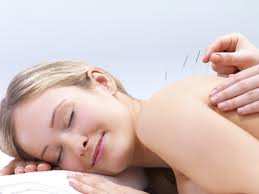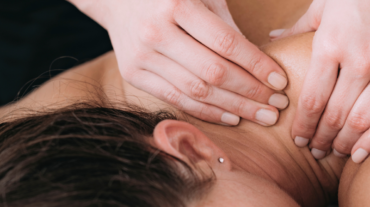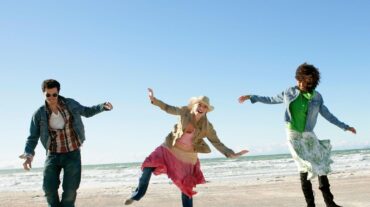 What is acupuncture?
What is acupuncture?
Acupuncture is the insertion of fine needles into your body's surface. A practiced acupuncturist causes little or no pain at all on insertion, because the needles are so fine and need to be inserted only a very minute amount. Also, the needles are solid (not hollow like hypodermic needles) and so they can bypass surface skin receptors. You may feel a slight pinch or a dull ache at some points, but the sensation should not be uncomfortable for more than a brief moment before the needle feels completely normal, and possibly even quite invigorating.
At Yellow Gazebo Natural Health Care, you are treated with only the best, sterilized needles, which are used just once and then are disposed of in accordance with the Clean Needle Technique (CNT).
Acupuncture can help reduce symptoms of almost any condition that does not require antibiotics or surgery.
Where does acupuncture come from?
Practiced for thousands of years, acupuncture is one of the main modalities of Traditional Chinese Medicine (TCM). Other TCM therapies include herbal therapy, Tui Na (Chinese massage), Ba Guan (cupping therapy) and Qi Gong (energy movement); each a specialized form of treatment under the larger umbrella of TCM. The extent to which a practitioner uses these various methods depends on their training and field expertise.
What is a typical acupuncture and TCM treatment like at Yellow Gazebo Natural Health Care?
Your first visit for acupuncture and TCM at Yellow Gazebo Natural Health Care will likely take about an hour, possibly up to an hour and fifteen minutes, depending on your condition. Supplemental visits will usually only require 45 minutes to an hour, and you may be asked to return for an average of 6-8 visits to see significant results. This number may be smaller if your condition is acute (recently acquired) or larger if chronic (i.e. you have had this concern for a few months or more).
Do eat something but try not to eat too heavy a meal before treatment, and arrive at least ten minutes before your scheduled appointment to fill out any necessary paperwork and to ensure that you have already begun to relax before your treatment begins.
TCM is a holistic medicine, and your therapist will ask you a wide range of questions about your general health as well as the condition that brought you to Yellow Gazebo Natural Health Care. Your therapist may also look at your tongue for cues about your health, as it is believed that your tongue is the only internal organ that can be viewed from outside the body, and therefore provides a unique source of information. Additionally, your therapist will likely take your pulse, paying special attention to not only the rate but also the texture, tone and depth of your pulse; all of these qualities provide a great deal of insight about your health. It is said that one who practices TCM for decades can tell what their patient had for dinner, whether they are coming down with a cold, has recently become pregnant, and much more!
Once diagnosis has been achieved, your therapist will direct you to undress accordingly while he/she is out of the room. Many treatments require only for your shirt sleeves and lower pant legs to be rolled up, whereas other conditions may require that you take off your shirt and/or your pants. You are not likely to be required to remove your underwear for acupuncture treatment. When you have exposed the appropriate areas for needling, and have given permission for the therapist to reenter the room, treatment can begin.
The insertion of needles is not likely to hurt in any way (see What is acupuncture? below for explanation), and needles will be left in for approximately twenty minutes while the therapist leaves the room and you relax. When the time has passed, your therapist will return and remove your needles.
In addition to basic acupuncture, you may be given electro-acupuncture, Tui Na, Ba Guan, Qi Gong and/or be asked to take some herbal medication with you (see below for explanations). All of these practices will be included in the 45 to 90 minute time frame.
Note that acupuncture is contraindicated if you have any of the following conditions:
- hemophilia
- anticoagulant medication
- open or infected skin
Acupuncture is completely safe if you are pregnant, though it is wise to inform your acupuncturist if you are carrying a baby. Be sure to only have acupuncture performed by a Registered Traditional Chinese Medicine Practitioner (R.TCMP) or a Registered Acupuncturist (R.Ac).
Who practices acupuncture and TCM?
In Ontario, the College of Traditional Chinese Medicine Practitioners and Acupuncturists of Ontario (CTCMPAO) has established regulation under the Regulated Health Professions Act (1991) along with the Traditional Chinese Medicine Act (2006). Together, these acts define who is qualified to perform acupuncture and other modalities of TCM. As it stands now, only a Registered TCM Practitioner is qualified to perform acupuncture and other TCM modalities that include herbal medicine. A Registered Acupuncturist is allowed to perform acupuncture and other TCM modalities, but is not allowed to practice herbal medicine. Because a Registered TCM Practitioner has more knowledge it is recommended that you receive acupuncture only from someone who is a Registered TCM Practitioner, in order for you to obtain the best possible diagnosis treatment.
What is TCM (Traditional Chinese Medicine)?
The fundamentals of TCM are composed of three main theories:
1. Yin-yang Theory. This theory proposes that everything in the universe can be divided into two opposite and complementary parts: the shaded side of a hill (yin), and the sunny-side of a hill (yang), for example. Thus for optimal health, yin and yang must be in balance throughout the body. Constant balance is impossible, of course, (due to disease, ever-changing events in life, and even the weather, all of which affect us at one time or another), and so we must continuously work towards achieving a balance through diet, exercise, and natural medicine.
2. The Theory of Five Elements. This theory proposes that the universe can be divided into five main elements: wood, fire, earth, metal and water. Each of these elements correspond to a main organ in the body (for example, water corresponds to the Kidney - but not precisely the same 'kidney' as in conventional medicine), as well as a taste (wood corresponds to the Liver, which corresponds to sour taste) and so on. The interrelationships between the Five Elements and their corresponding organs, body tissues etc., determine your individual health state. It is through the manipulation of these relationships that a TCM practitioner is able to balance your health.
3. The Meridian Theory. This most basic of the three theories states that there are pathways through the body called 'meridians'. Like rivers, these pathways carry nutrients such as Qi (energy), Blood (which carries the Qi) and Body Fluids (which help to nourish and moisturize the body). It is along these meridians that a TCM practitioner can use acupuncture at designated spots - usually where Qi gathers the greatest, so that balance and harmony may be achieved.
What is electro acupuncture?
Electro-acupuncture is the practice of adding a small electrical current between two acupuncture needles. Augmenting the regular use of needles, this practice is often useful for patients suffering from pain, such as with those recovering from headaches or sciatica.
Click here to watch a video demonstration.
What is herbal therapy?
Chinese herbal therapy can take several forms, the most traditional of which is when the fresh herbs are cooked in a clay pot and drank in the form of tea. Other forms include freeze-dried herbs that can be dissolved, as well as pills, tinctures, herbal patches, and more.
While some TCM practitioners use only herbal therapy, at Yellow Gazebo Natural Health Care, we tend to use herbs as an adjunct to acupuncture and other forms of natural medicine.
Herbal therapy can help reduce symptoms of almost any illness that does not require antibiotics or surgery, from cold and flu viruses to fertility.
Click here to watch a video on how to prepare granulated Chinese herbs.
What is Tui Na (Chinese Massage)?
Tui Na is an ancient form of massage and body manipulation, developed in China as a means of assisting the TCM practitioner in bringing balance to your health. Following the principles of TCM outlined above, Tui Na is often used along with other TCM modalities as opposed to being used on its own. Tui Na is helpful for many musculoskeletal conditions and for treating pain, such as with fibromyalgia and osteoarthritis.
Click here for more info on Tui Na massage.
What is Ba Guan (Cupping Therapy)?
Ba Guan is a method of TCM whereby a local suction is created on the skin using glass or plastic cups. Traditionally a flame is used to create the suction - however, due to fire hazards, at Yellow Gazebo we use only handheld pumps that attach to the cups via small valves.
Placed on the body at particular points along meridians for 10-20 minutes, the cups draw blood to the surface of the skin, thus encouraging movement of Qi and releasing blocked pathways. Although the cups leave some bruising for a couple of days, this ancient healing modality has been shown to provide much relief from respiratory conditions such as asthma, as well as gastrointestinal disorders such as irritable bowel syndrome, and from painful conditions such as back pain.
Click here for more info on cupping, and click here to watch a video demonstration.
What is Ear Acupuncture / Auricular Therapy / Ear Seeds?
Ear acupuncture, also known as auricular therapy, has been used in China for thousands of years, and was further developed more recently by a French neurologist in the 1950's. It involves the use of smaller acupuncture needles to stimulate points on your ear: instead of a 1-inch, 0.22mm thick needle, your Traditional Chinese Medicine (TCM) practitioner will use something more like a 0.5-inch, 0.18mm thick needle. This not only helps you feel less of a sensation on your ear with needling (although there is rarely pain when an acupuncture needle is applied anyway), but also enables your practitioner more ease with using a variety points on your ear, which often is small and tricky to manoeuvre around.
Click here for more info on ear acupuncture.
What is Qi Gong (Energy Movement)?
Qi Gong is the practice of aligning breath, movement, and focused awareness. It is most commonly used as a personal meditative exercise practice, but can also be used to heal others. A TCM practitioner that uses Qi Gong as a modality often prescribes specific exercises that you can perform on your own, or may manipulate you in a form of something like a very light massage. Sometimes, Qi Gong practice may even resemble something like Reiki, a Japanese energy therapy that likely has ancient Chinese roots.
Qi Gong is an excellent adjunct for injuries that cannot withstand massage, such as some types of joint pain, and for dealing with mental health, as in stress or depression.
Click here to watch a video on Qi Gong for fertility.
Meet our acupuncture team here
If you would like to learn how acupuncture at Yellow Gazebo might be able to help you, contact us for a FREE consultation on how acupuncture and TCM can help you.
Read these acupuncture and TCM articles:
3 Feng Shui Tips to Improve Your Health
5 Ways Your Spleen is Different in Chinese Medicine
Acupuncture and Treating Eczema
Acupuncture: Giving Fertility a Chance
Unknown Fertility Issues Treated with Acupuncture
Getting Stable from Dizziness with Acupuncture
Pregnancy: Massage Therapy and Acupuncture Safety
Quitting Smoking with Acupuncture
Treating Arthritis with Acupuncture
Treating Diabetes With Acupuncture
Pricing:
$135 initial session (60 minutes)
$110 follow-up session (45-60 minutes)








